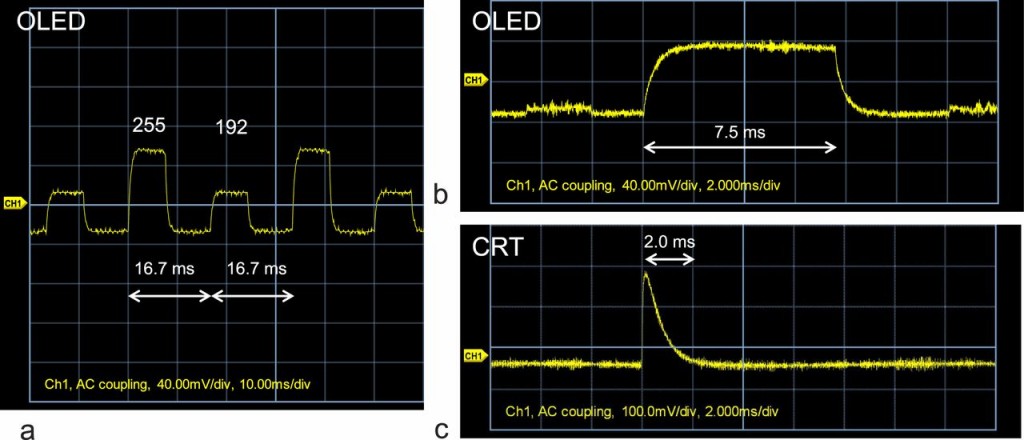
The Panasonic TC-L65WT600 is the first Ultra HD TV with 4K 50/60p-invoer based on HDMI 2.0 and DisplayPort 1.2a specifications. The L65WT600 offers 4K playback of up to 60 frames per second.
With 4K THX certification is 165 cm (65 inch) wide Panasonic TC-L65WT600 suitable for lovers of home cinema. This screen is equipped with the 2,000 Hz Back Light Scanning (BLS) technology ensures crisp moving images even with fast action scenes. In addition, this TV performed in minimalist Glass and Metal-design, coming through the narrow edge of the 4K images more justice.
The WT600 provides access to a wide range of 4K content, to take advantage of the innovations that can offer this TV, optimally This means that users their 4K experience will not see an increase in video content, only spectacular but also with groundbreaking games, Internet content and their own photographs, each in 4K quality.
The advanced 4K 50/60p-invoer, which is based on HDMI 2.0 and DisplayPort1.2a specifications, ensures that the TV is ready will work with future 4K-compatible players, set-top boxes and game consoles new generations for the future .
Panasonic TC-L65WT600 designFans of PC games can easily connect their PCs to the WT600 through the 60p-compatible DisplayPort, allowing them to enjoy the latest blockbuster games with lots of detail and smooth moving images.
With the built-in HTML5 web browser of the WT600 users to web pages in Ultra HD quality. For example, the detail of Online maps than ever before.
The Panasonic TC-L65WT600 according to the manufacturer is the first TV available in the market that has a built-4K H.264 (MPEG4) decoder, which not only playing 4K video files from USB and SD card, but also displaying 4K content directly from the Internet. Photography enthusiasts can with 4K Photo Viewer SD view their photos from an SD card, or use 4K Swipe & Share to wirelessly transfer photos from a smartphone or tablet.
Panasonic TC-L65WT600 4K image quality
To ensure the best 4K home cinema viewing experience the THX4K Certified WT600 screen causes colors, tones and resolution will be displayed as the directors in Hollywood had in mind.
With 4K Intelligent Frame Creation can display the WT600 smooth images up to 120 frames per second, even with Ultra HD sources. The 4K Ultra HD TV Panasonic also analyze complex scenes with movement in various directions and optimizes each object separately. The Infinite Contrast technology delivers high contrast
The Local Dimming Pro circuit and the Gamma Area Control provide more details in dark or bright areas of the image. In addition maximizes the new 4K Hexa-Processing Engine for the quality content that was created with a lower resolution than 4K. The circuit processing technology produces images with higher definition to interpolate the missing parts of the images and reproduce. The non-existing data That way they get a quality of 4K sources approaches.
The WT600 is not only ISF certified, but also compatible with the Calman calibration software, which ensures optimal color neutrality. The app "Panasonic TV Remote 2" features Smart Calibration, a powerful feature that allows the viewer to the TV detailed correction curves can adjust gamma, white point and color saturation using an Android or iOS smartphone or tablet.
Easy operation
The user interface provides users of the Panasonic TC-L65WT600 simplest possible Smart TV experience. With the personalized feature my Home Screen gives each family member an instant access to their favorite TV programs via its own personalized home screen.
Following the Smart VIERA feature my Home Screen, Panasonic now my Home Screen functions extended with preprogrammed Home Screens. These offer users quick and easy access to their favorite content providers, including Eurosport and YouTube. From October 2013, viewers Panasonic these channels can activate via the new Homescreen-star collective everywhere. The my Homescreen download function will be available from October 8 for the Smart VIERA TV lineup. The Panasonic TC-L65WT600 will be delivered on the market, all equipped with this function.
The control and input options of the WT600 be further supplemented by the function Voice Interaction. Allows users to control their TV by speaking into the microphone of the touchpad controller or a smartphone or tablet which is the Panasonic TV Remote app 2 installed. This allows users to quickly check Internet content or look on their home network to a favorite song. With Swipe & Share users can also images in 4K resolution on the big screen of the WT600 just by having swipe with your finger.
Network and connectivity
Ensure the integrated twin HD tuners of the WT600 for a much more convenient and flexible viewing experience, which means there is no need to miss anything. This feature allows users to view a live program while another program is recorded, or watch a program while another family member while viewing another program on a tablet, and all this without an external set-top box. This is especially useful if want to watch while others want to miss a football match. No gold for some families a movie
Like all Smart VIERA TVs also has the Panasonic TC-L65WT600 built-in wireless LAN. Users can multimedia content on their home network quickly and easily accessed through DLN streaming, or via the platform Apps for Smart VIERA with its increasingly comprehensive range of Smart TV apps, including popular apps for social networks like Facebook, Twitter and Skype. The automatic pop-upcamera the WT600 can create users with a click on a video call button.
The embedded Web of L65WT600 also supports Flash content. The quality of the embedded videos and graphics with low resolution may be using Web Content Optimizer Pro. Significantly improved For text and web addresses easy to enter, users also using a USB adapter or wirelessly via Bluetooth to connect a keyboard to the WT600.
http://shop.panasonic.com/shop/model/tc-l65wt600/index.dot?sc_mc=pr_na_pcec_tv_tc-l65wt600_09042013
I just found my new computer display!
![[H]ard|Forum](/styles/hardforum/xenforo/logo_dark.png)



